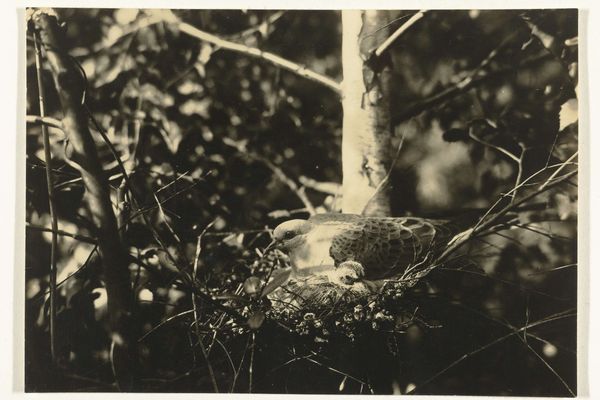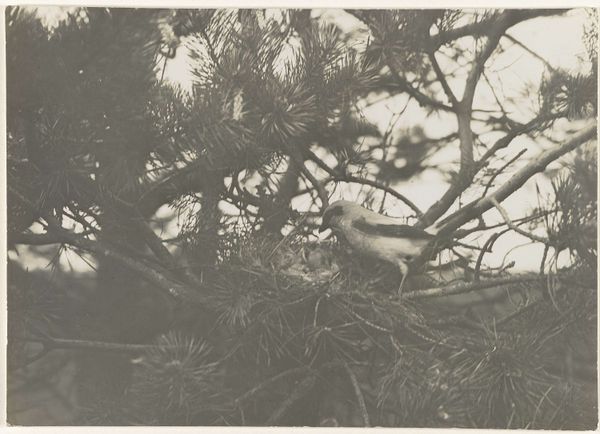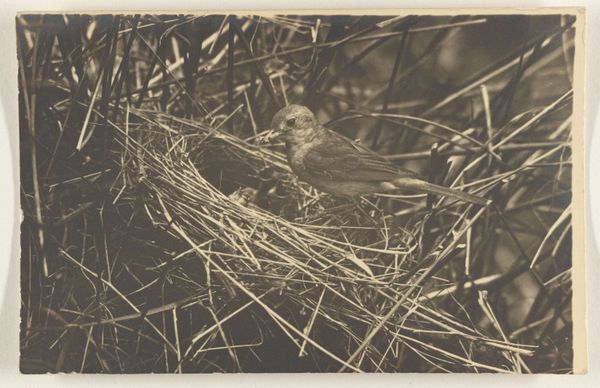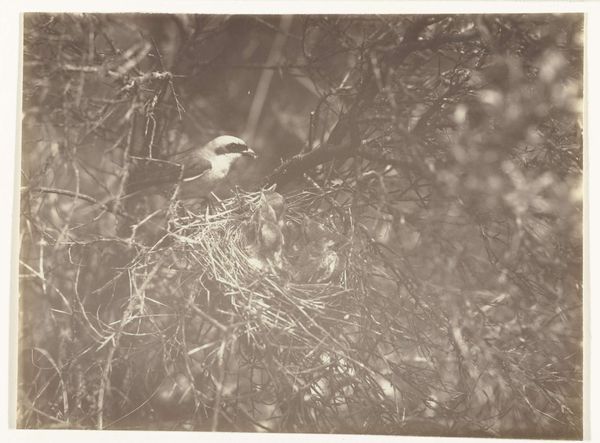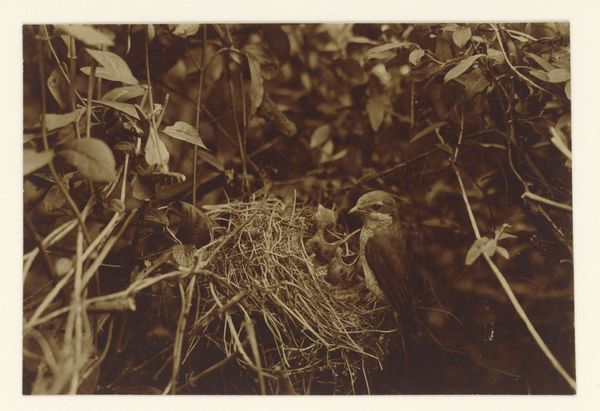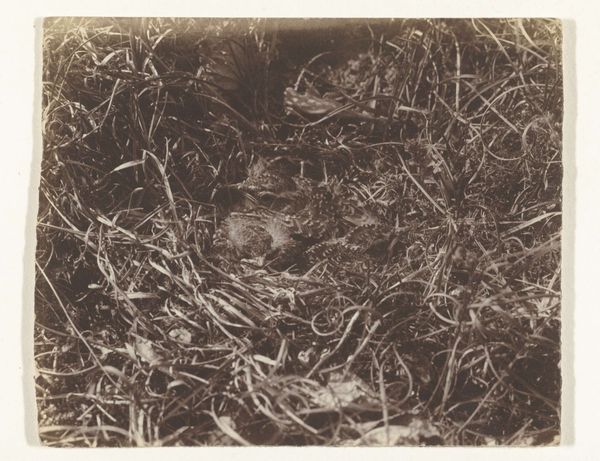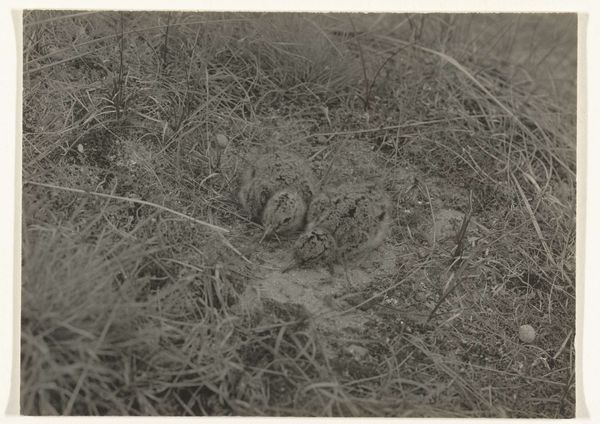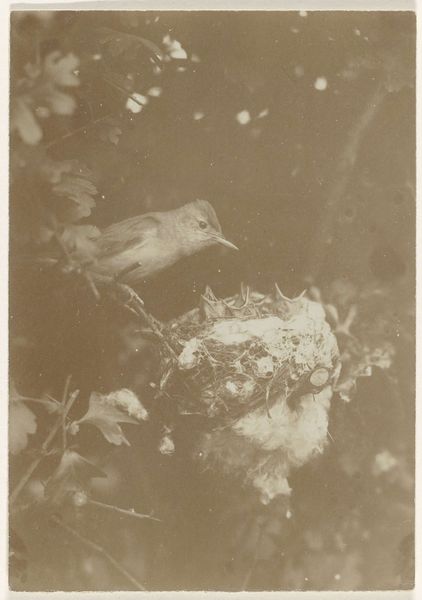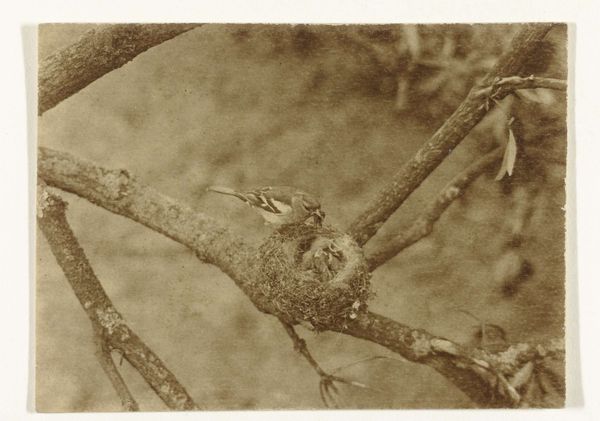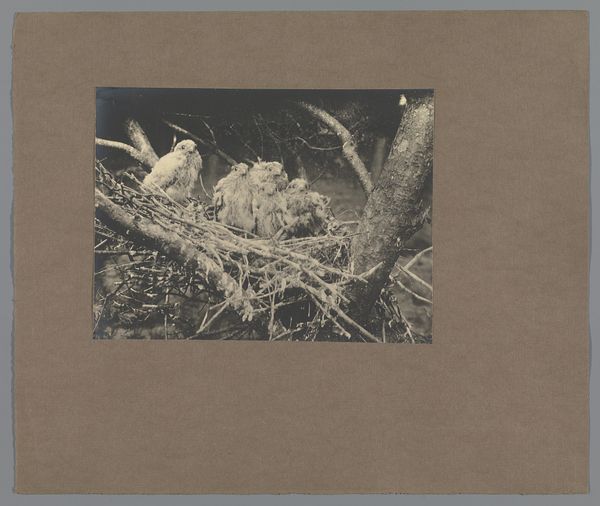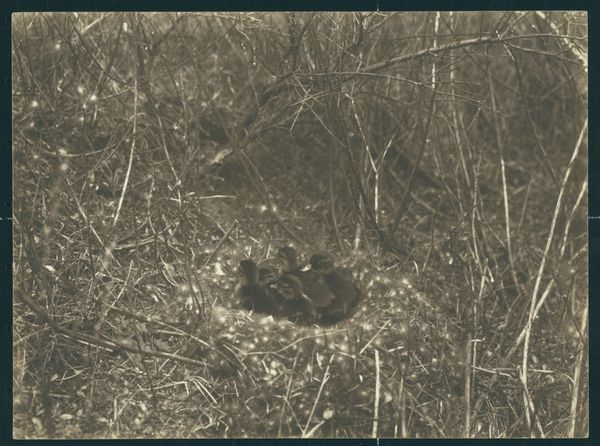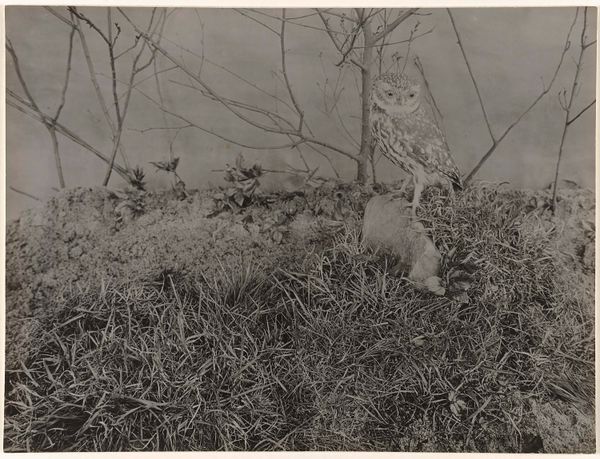
photography
#
organic
#
still-life-photography
#
organic
#
pictorialism
#
landscape
#
photography
Dimensions: height 168 mm, width 122 mm
Copyright: Rijks Museum: Open Domain
Curator: This photograph, titled "Grauw Klauwier wijfje op haar nest" or "Female Shrike on her Nest," was created around 1905 by Richard Tepe, and is currently held in the Rijksmuseum collection. Editor: There’s a powerful intimacy in this image. It feels very private, a glimpse into a hidden world. The way the bird blends with its nest suggests fragility, vulnerability, and the raw essence of motherhood, and of the life cycle itself. Curator: Exactly. Tepe’s work here is considered to exemplify the Pictorialist style, which gained momentum in the late 19th and early 20th centuries. This meant photographers often aimed to have their work regarded as artistic expression that mirrored painting in sentiment and concept. They aimed to present subjective emotions or ideas through a photograph, not simply mirror nature through mechanical means. Considering the turn of the century's tumultuous socio-political context, with urbanization rapidly advancing, and people trying to establish and reaffirm tradition versus modernity, this kind of pictorial style gave way to art forms that aimed for romanticism and subjectivism. Editor: It is fascinating to note that birds' nests, throughout the ages, often represented family, security, and home, but beyond these surface-level meanings, nests and eggs also embody creation, fertility, and hope. One almost forgets the great skill these animals exhibit as architects when building their homes. Tepe managed to capture a visual narrative with layers of meaning. Did he spend hours studying the bird before capturing it in film? There seems to be more than meets the eye. Curator: Absolutely. Tepe would've spent hours if not days meticulously studying his subjects and the settings they were placed in. This approach highlights the ongoing relevance of works that depict organic existence within constructed societal landscapes that are currently going through ecological crisis. Editor: That certainly gives me something new to consider. It’s not just a quaint natural scene. It encourages us to look for echoes of primal narratives in this photography and their potential for our shared future. Curator: Indeed. Tepe's photography serves as a window into both the past and a conversation starter for the present and the times yet to come.
Comments
No comments
Be the first to comment and join the conversation on the ultimate creative platform.

